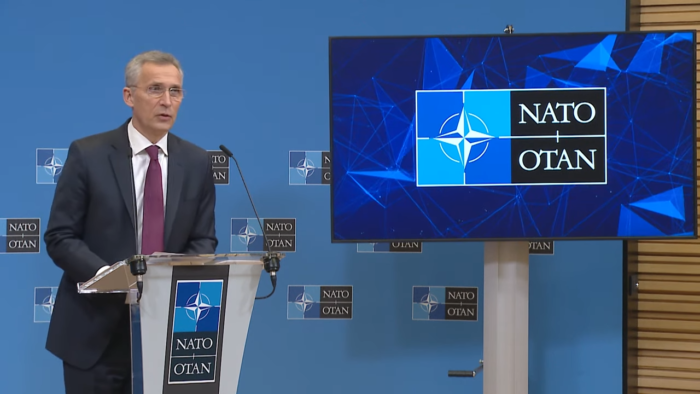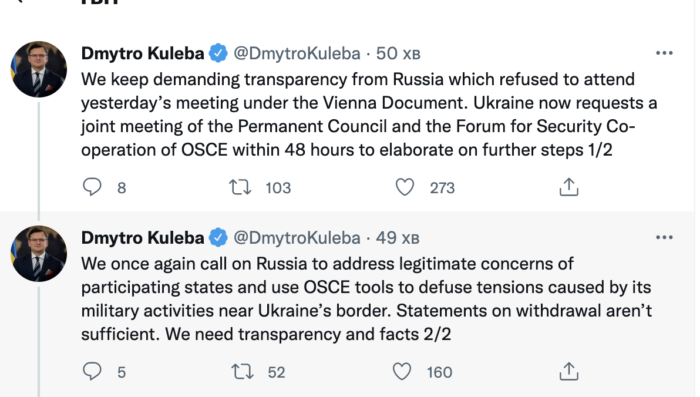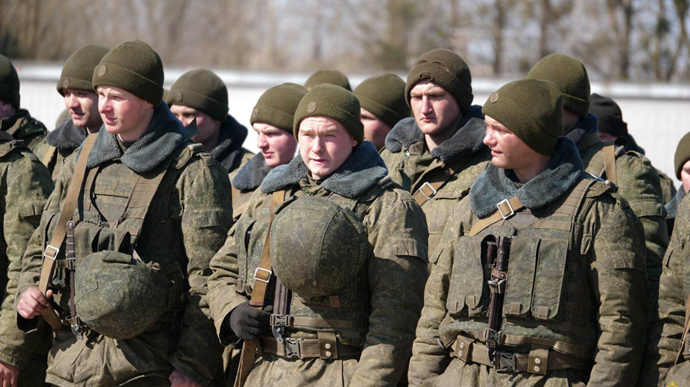During a 16 February briefing, NATO Secretary-General Jens Stoltenberg said that Russian buildup near Ukrainian borders continues, despite Moscow’s claims that Russia had begun withdrawing some of its military units.
“So far, we have not seen any de-escalation on the ground. On the contrary, it appears that Russia continues their military buildup,” the Secretary-General said.
As well, the Defense Ministers of NATO countries adopted a declaration calling on Russia to reverse its troop buildup.
“We are gravely concerned by the very large-scale, unprovoked, and unjustified Russian military build-up in and around Ukraine and in Belarus. We urge Russia, in the strongest possible terms, to choose the path of diplomacy, and to immediately reverse its build-up and withdraw its forces from Ukraine in accordance with its international obligations and commitments. We remain committed to our dual-track approach to Russia: strong deterrence and defense, combined with openness to dialogue.
Russia’s actions pose a serious threat to Euro-Atlantic security. As a consequence and to ensure the defense of all Allies, we are deploying additional land forces in the eastern part of the Alliance, as well as additional maritime and air assets, as announced by Allies, and have increased the readiness of our forces. Our measures are and remain preventive, proportionate, and non-escalatory. We are prepared to further strengthen our defensive and deterrent posture to respond to all contingencies.
Our commitment to Article 5 of the Washington Treaty is iron-clad. We stand united to defend each other.
NATO remains committed to the foundational principles underpinning European security, including that each nation has the right to choose its own security arrangements. We reaffirm our support for the territorial integrity and sovereignty of Ukraine within its internationally recognised borders. As stated previously, any further Russian aggression against Ukraine will have massive consequences and carry a high price. NATO will continue to closely coordinate with relevant stakeholders and other international organisations including the EU.
NATO and Allies continue to pursue diplomacy and dialogue with Russia on Euro-Atlantic security issues, including at the highest levels. We support all these efforts, and efforts in the Normandy Format to implement the Minsk agreements. We have expressed our readiness to engage in a Renewed European Security Dialogue initiated by Poland as the current OSCE Chair. We have made substantive proposals to Russia to enhance the security of all nations in the Euro-Atlantic region and await a response. We have repeatedly offered, and continue to offer, further dialogue through the NATO-Russia Council, and stand ready to engage. We strongly encourage Russia to reciprocate and to choose diplomacy and de-escalation.”
Russia’s Ministry of Defense reports partial troop withdrawal. OSINT experts disagree
US State Secretary Antony Blinken also said that Russia continues to threaten Ukraine with troops and weapons massed near the country’s borders, reinforcing the EU and NATO’s skepticism over the Kremlin’s claims to have withdrawn some forces.
“We continue to see critical units moving toward the border, not away from the border,” he told MSNBC. “There’s what Russia says and then there’s what Russia does — we haven’t seen any pullback of its forces.”
Earlier, in a statement on 12 February, Russian defense ministry spokesman Igor Konashenkov stated that troops posted in Russia’s southern and western military districts, which border on Ukraine, finished drills and started departing to their permanent bases. The Russian troops arrayed in Belarus, he says, would return to Russia after 20 February, when Belarus-Russia joint drills finished. Later Russian President Putin’s press secretary Dmitry Peskov reiterated that Russia was partially withdrawing troops.
Meanwhile, Ukrainian FM Dmytro Kuleba says that “statements on withdrawal aren’t sufficient” and that Ukraine demands transparency from Russia, urging it to use “OSCE tools to defuse tensions”:
According to a Ukrainian intelligence report “shared exclusively with CNN,” Russia’s buildup of troops at Ukraine’s borders has persisted, despite Moscow’s claims of a drawdown, but “the number of Russian forces remains insufficient for an invasion.”
Ruslan Leviev, a researcher who follows Russian troop movements, said that the Russian military equipment that left Crimea could be redeployed at bases near Ukraine’s east as the permanent bases of some units involved in Crimean drills are not far from Ukraine’s northeastern border.
Read also:
- Russia’s Ministry of Defense reports partial troop withdrawal. OSINT experts disagree
- Russian mercenaries increase presence in Ukraine
- Full-scale invasion of Ukraine still unlikely, yet local escalation probable: analysis of scenarios
- Russian propaganda now shows Ukraine as “enslaved brother,” invasion as “just reclamation”
- Russia cancels scheduled Azov Sea blockade, Black Sea still to be blocked
- Thousands march in Kyiv to warn Putin he will fail in Ukraine







